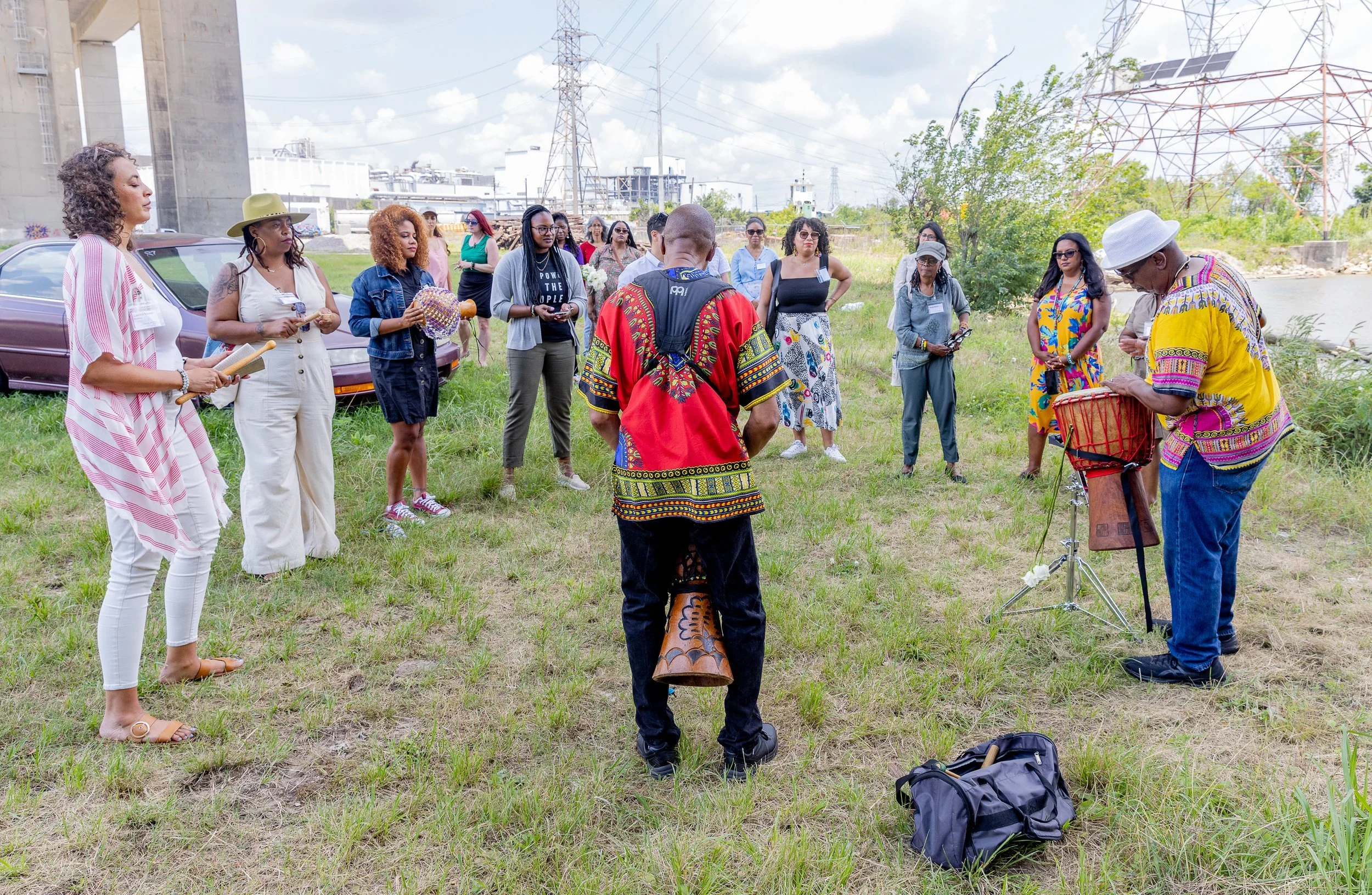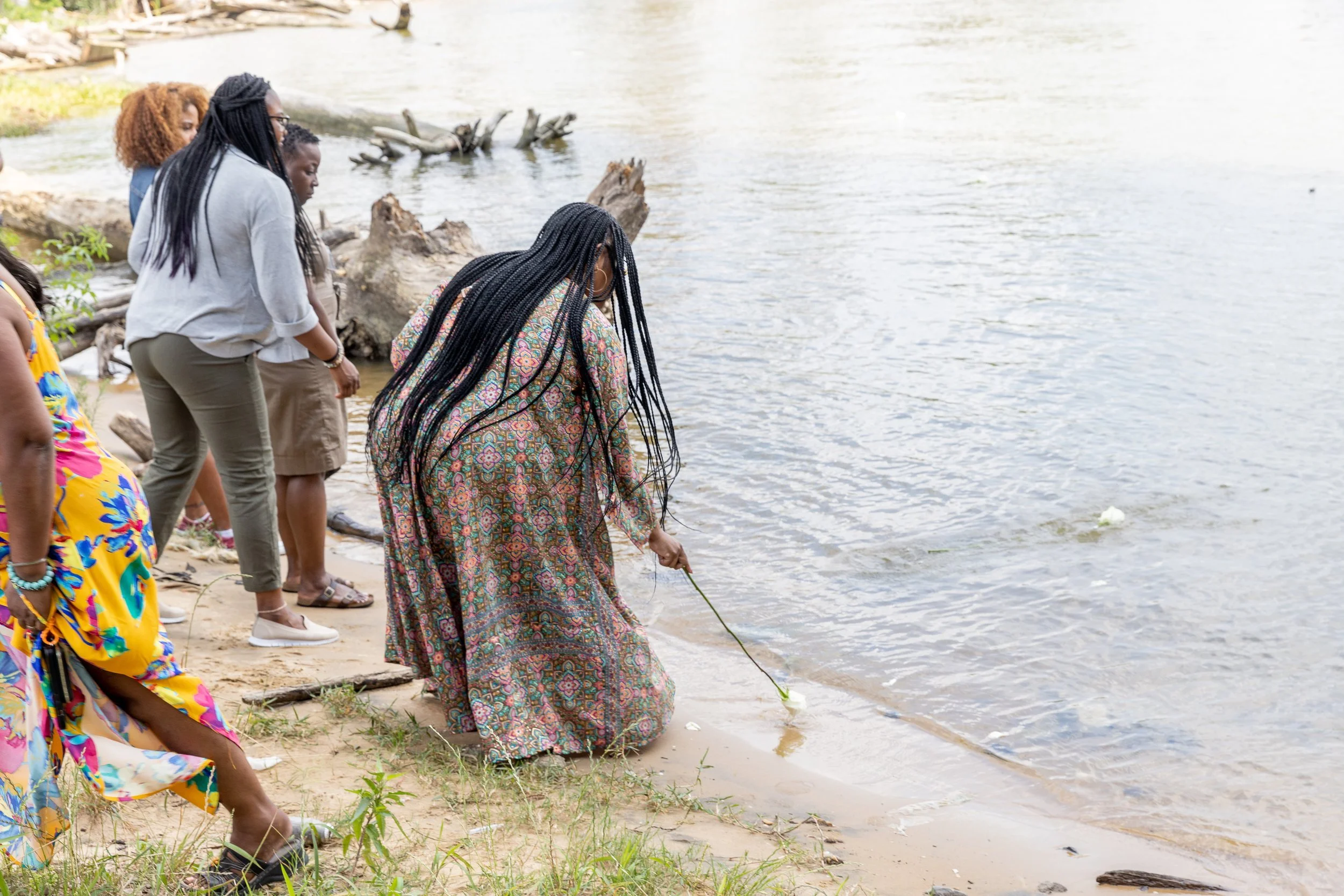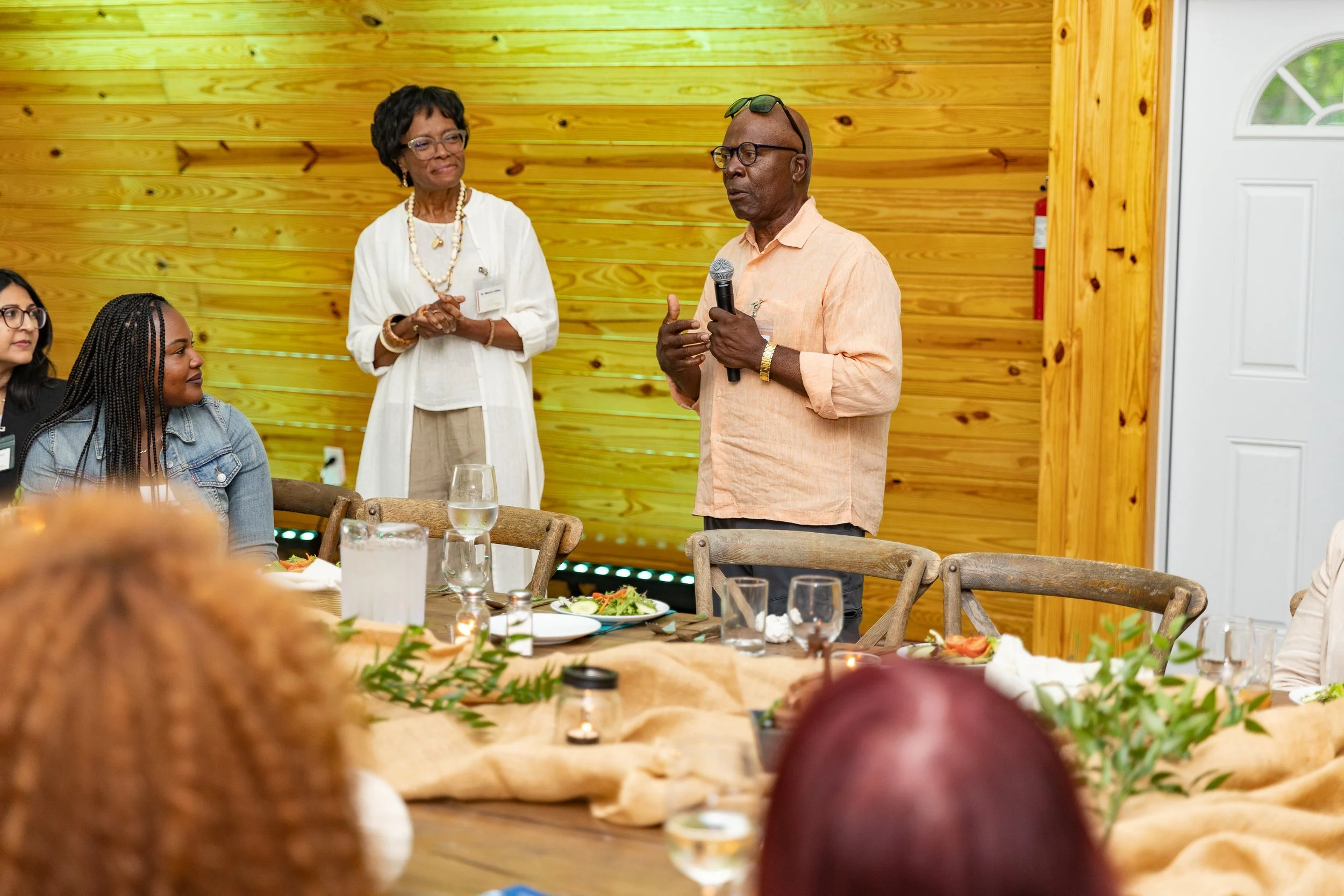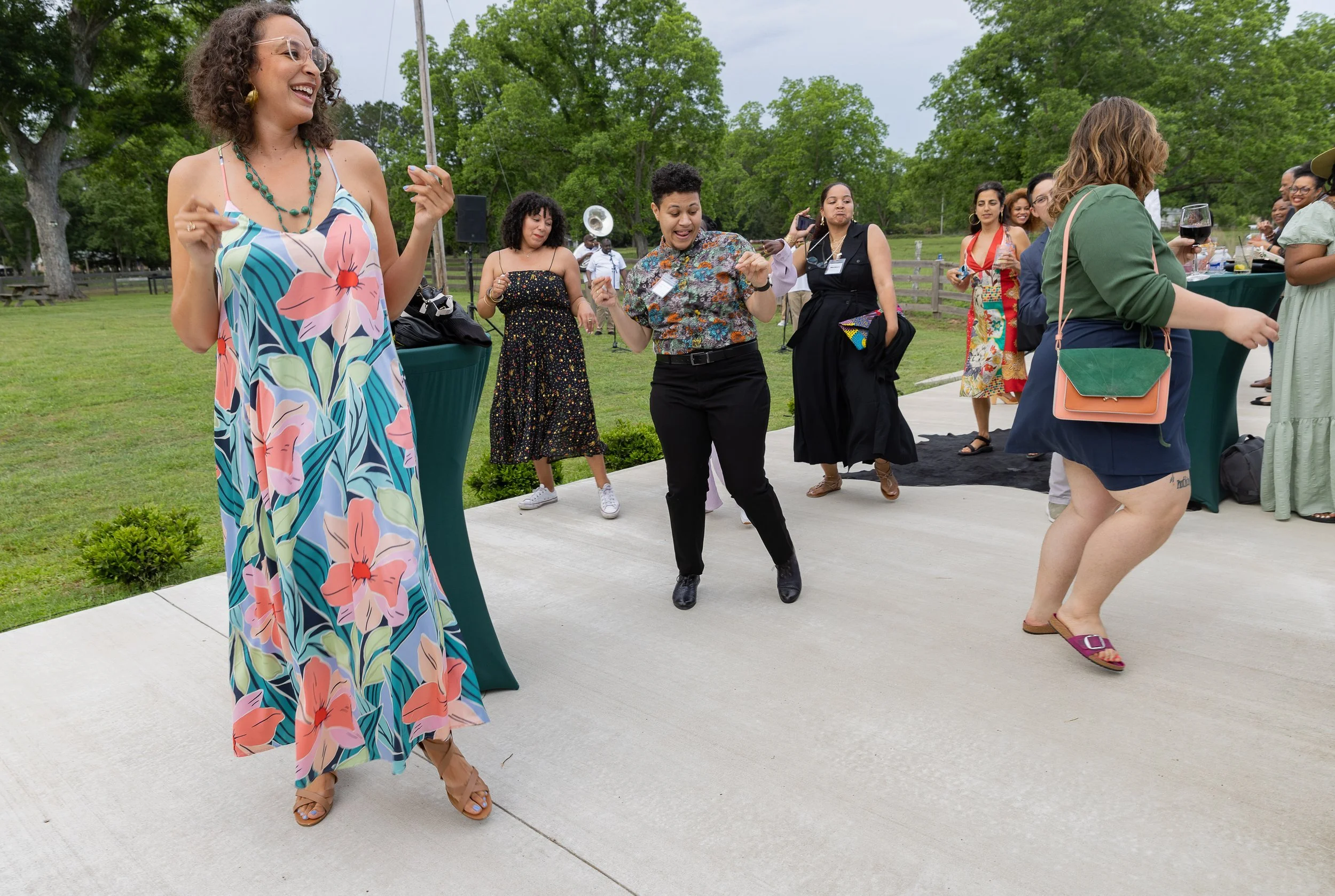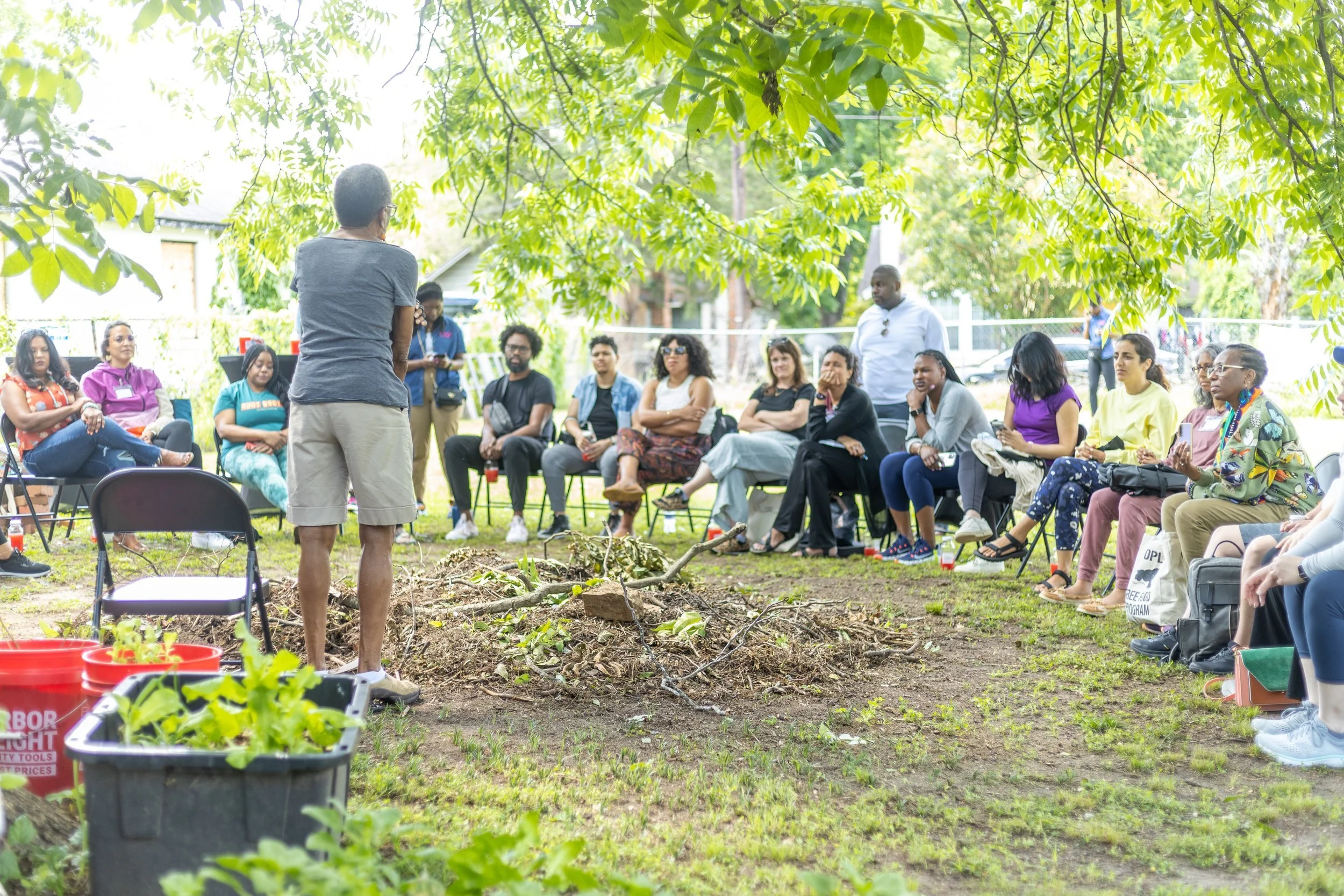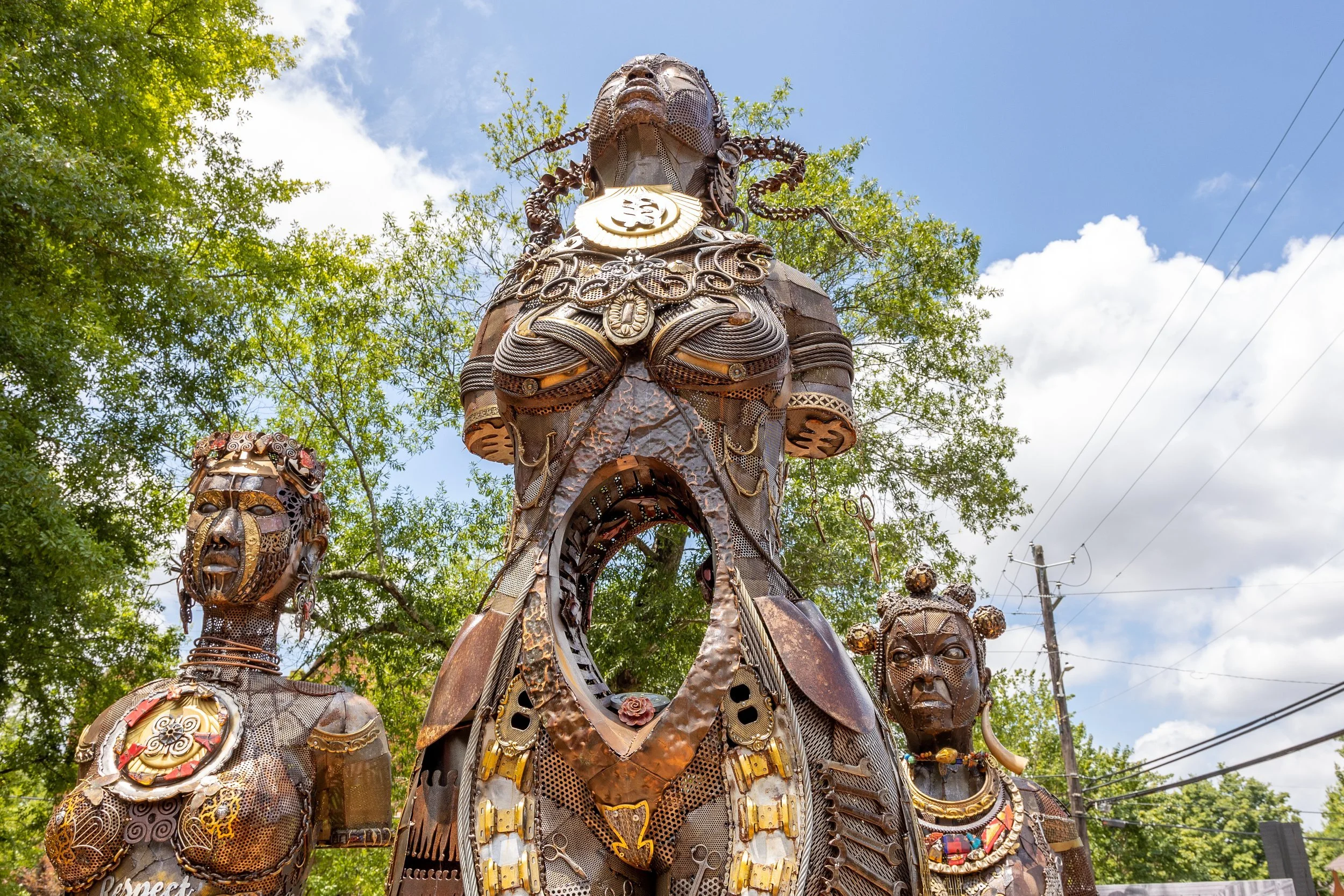From Mobile to Montgomery: Charting a Path for Black Entrepreneurship in Alabama
Collage by Megan Totah Design
Our trip to Alabama last spring served as a cornerstone event for rooting our work in community, stewardship, and investing in Southern Black entrepreneurship. We shared such beautiful moments and conversations with an incredible delegation made up of local community leaders, creative entrepreneurs, artists, investors, organizers, and ecosystem partners.
Mobilizing in Mobile
We opened the four-day journey through Alabama in Mobile, home to RUNWAY founder Jessica Norwood. The welcome reception kicked off with conversations about community investment and RUNWAY's 10-year commitment to the South. Right out of the gate, we dove into the pertinence of collaboration and community-based partnerships in shaping the impact we want to make. We shared our Funder Manifesto, and examined how the choice for investors and wealth holders to move in right relationship can help shift power and build power for Black entrepreneurs and the communities they serve. Guests of honor included Sam Jones, former mayor of Mobile, Alabama; Jesse Norwood, former mayor of Prichard, Alabama; Barbara Peters, Business Development Navigator, Mobile Chamber of Commerce; and Tim Hale, Board Member of the Port of Africatown.
Photo by Melissa
A trip to Mobile, Alabama would not have been complete without a tour of Africatown. When we got there, we took a moment to reflect on what being on this land meant. This was where the last slave ship, The Clotilda, departed Alabama in 1860, more than 50 years after Congress outlawed the importation of additional enslaved people. For the descendants of enslaved Africans in the United States, entrepreneurship represents more than just owning a business and pursuing the proverbial “American Dream.” Instead, the ability for Black people to participate in local, regional, and global markets represents a dream deferred by systemic racism and discrimination.
We communed as a group to honor our ancestors on this land. We called them in as we placed roses in the water in memory of the enslaved people aboard the ship. Africatown illuminated what generational entrepreneurship and ownership has the power and potential to cultivate. Drummers helped transmute our emotions with their rhythmic playing, and we were invited to pick up instruments to join in on the music. Creating a unified pulse reminded us of life’s continuity and our connection to those who came before us.
Photos by Raquel Jones
A particularly powerful portion of the trip was convening at Jenkins’ Family Farm, one of the oldest and largest Black-owned family farms in Alabama. We gathered for a gorgeous farm dinner where we heard from Drs. Douglas & Marcia Littles, the current stewards of the farm, about the history and legacy of the land, and the significance of land ownership for Black communities.
Photos by Raquel Jones
It was a vibrant evening of food, joy, music, and dancing. We were joined by local Black artists, musicians, entrepreneurs, and community builders to dream about new narratives we want to create around wealth, culture, Blackness, and being. The stories helped resurface questions around the connection between ownership, entrepreneurship, and powerbuilding. These are the types of inquiries that continue to drive our work and our journey through the South with ROOTED.
GEE’S BEND
Gee's Bend stands as a testament to the enduring resilience and creative spirit of Black communities. Nestled within the heart of Alabama, this small, historically Black community has a rich and storied history that speaks volumes about the strength and determination of its residents.
Originally established as a cotton plantation worked by enslaved Africans, Gee's Bend emerged from the shadows of oppression to become a beacon of hope and resistance.
Photos by Kirk Jordan
The quilts of Gee's Bend are not just works of art; they are symbols of defiance and self-expression. Created by generations of Black women who turned scraps of old clothing and fabric into masterpieces, these quilts embody the ingenuity and creativity born out of necessity. In the 1960s, the Black women of Gee’s Bend formed Freedom Quilting Bee, a workers cooperative that provided much-needed economic opportunity and political empowerment. These quilts tell the stories of resilience, survival, and triumph over adversity, weaving together the threads of a proud and enduring heritage.
During our visit, Jessica invited folks to consider how this community can become an anchor to support other economic ecosystems in Wilcox County & Alabama. What resources and other region-specific needs could be cultivated to help local Black communities and entrepreneurship thrive?
Manifesting in Montgomery
On the final leg of our time in Alabama, we journeyed through Montgomery with a leading question in mind: Why are investments in Black creatives so critical for powerbuilding? We met with the leaders of Clarke Street Fund, an organization generating and distributing funds for the sustainability and revitalization of Black communities in Alabama, to learn about Black food sovereignty in the region.
Photos by Kirk Jordan
After our Clarke Street Fund experience, we got to meet Michelle Browder, the lead artist and visionary behind the Mothers of Gynecology Monument. Anarcha, Lucy, and Betsey were enslaved women from plantations in and around Montgomery, Alabama. With neither consent nor anesthesia, they were experimented upon by Dr. J. Marion Sims in the 1840s. After publishing the results of his “success,” Sims moved to New York to seek fame and fortune. Within a decade, he became known as the Father of Gynecology.
Photo by Kirk Jordan
The 15-foot monument honors Anarcha, Lucy, and Betsey, telling their story and shining a light on ongoing racial disparities in the healthcare industry today. The monument stands as a symbol of all of the enslaved women who were experimented upon in the quixotic pursuit of a modern “science” of gynecology, by Sims and many others.
Making our way through Montgomery allowed us to consider how wealth is actually defined.
When we talk about Black wealth, are we only defining it in financial terms, or is it more expansive than that?
What happens when you invest in Black entrepreneurs who are thinking innovatively and building businesses that support community health and community wealth, and Black artists who create masterpieces that raise awareness and inspire action?
Our time in Alabama was not just spent, it was deliberately invested––invested in purpose, people, placemaking, and powerbuilding.
We explored how storytelling can build community, create a sense of immediacy, change policy, and ignite movements. We learned about the history of Black land loss in the South and how it is deeply intertwined with the racial wealth gap we continue to see today.
We communed with local and state representatives, economic thought leaders, and changemakers to learn and exchange stories about Black wealth, what specific entrepreneurial considerations need to be accounted for in rural communities, and how investments in Black creatives is critical to building power.
We are immensely grateful to the people of Alabama and the South who invested their time in meeting with us to co-conspire, strategize, and collaborate in building a world where Black entrepreneurs thrive in a reimagined economy rooted in equity and justice.



